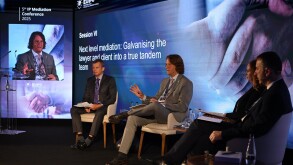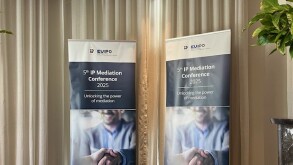His colourful description of the USPTO's Patent Trial and Appeal Board as a "death squad" for property rights roused a few chuckles, but the most surprising moment was when the Chief Judge of the Federal Circuit admitted that the CLS v Alice ruling was "the greatest failure in my judicial career".

"I think we have a responsibility to deal with what we are given and try to provide guidance in the right direction and we did not do that," said Rader. "But the opportunity is still open and I think the court will move with diligence to try to correct the problems we created in CLS v Alice".
I made a mistake
The court's failure in this respect was not a revelation to many of the attendees. Since its 2-1 panel decision to uphold Alice's patents in July 2012, lawyers have been scratching their heads over seeming inconsistencies between the ways various judges have interpreted Section 101. May's en banc rehearing did not do much to clear up the confusion over what constitutes a patent-ineligible abstract idea, despite a 125-page opinion containing six opinions on the subject. While the court concluded that the claims it had previously upheld were now invalid, the reasoning behind its about-turn was divided at best. At the time, Rader himself lamented that there was "little, if any, agreement" in the court.
No, Rader's statements were surprising because unfortunately the US is now at the point where it is very rare for an authority figure to admit that he or she made a mistake.
As the recent breakdown in US budget negotiations between the Republican and Democrat parties has shown, the standard protocol these days is to blame someone else for the problem, even when the posturing flies in the face of all evidence to the contrary.
So it was reassuring, if a little astonishing, to hear Rader not only take responsibility for the widespread confusion over Section 101 but also to promise that the court would rectify its error.
Of course, the court will have to wait until a case incorporating the relevant issues appears on its dockets. But since there is no shortage of litigation over the alleged infringement of business method patents or confusion over the limits of the abstract ideas exemption, this seems unlikely to represent much of a delay.
What could the test be?
The more pertinent problem is how the court can create a bright-line test that will withstand a potential appeal to the Supreme Court. The Federal Circuit's previous efforts to do so by introducing the machine or transformation test in Bilski were subsequently gutted by the Supreme Court, which declared the test a "useful and important tool" but not a dispositive test.
In addition, despite the Federal Circuit's reputation as an IP-friendly court, it is hard to see how such a test could be created without effectively invalidating many business method and software patents. In the en banc opinion, Judge Kimberly Moore, dissenting in part and joined by three other judges, said the decision represented the "death" of hundreds of thousands of patents. That prediction may become a prophecy; how many business method and software patents that have been granted post-Bilski would survive a return to a machine or transformation-style bright-line test, in the unlikely event that such a test would survive the Supreme Court?
It is difficult to believe that defining the meaning of an "abstract idea" – two seemingly innocuous words – could elude the collective efforts of some of the sharpest minds in America. Some people, including Judge Jay Plager in a majority decision in MySpace v GraphOn, have suggested that courts could sidestep the "swamp of verbiage that is Section 101" by insisting litigants instead initially use patentability conditions outlined in Sections 102, 103 and 112 to address patent invalidity. But this tacit admission that the courts cannot decipher the language of the law offers little hope for the rest of us, who have to stick to it. In addition, the sections Plager suggests also include language that is open to interpretation. For example, what constitutes a non-obvious idea? And if an invention passes those tests, the unresolved interpretation of Section 101 will presumably have to be revisited again.
Save the system; save yourselves
The showdown over the semantics of this tiny fragment of patent law is the tip of an iceberg. That iceberg – the debate over whether the continuous expansion of IP rights is encouraging or harming innovation – is also looming in the debate over what, if anything, should be done to curtail the activities of patent trolls. While the outcome is uncertain, one thing is guaranteed: a collision is coming and neither the courts nor the politicians can save everyone. Decisions will have to be made over who should take the seats in the lifeboats, and if there is any lesson to be learned from the Titanic disaster, it is that those decisions should be made sooner rather than later.
As unfortunate as it may be for the owners of some business method and software patents, a bright-line test is needed, and the courts may need to kill some patents in order to save the entire system from drowning in a murky morass.









